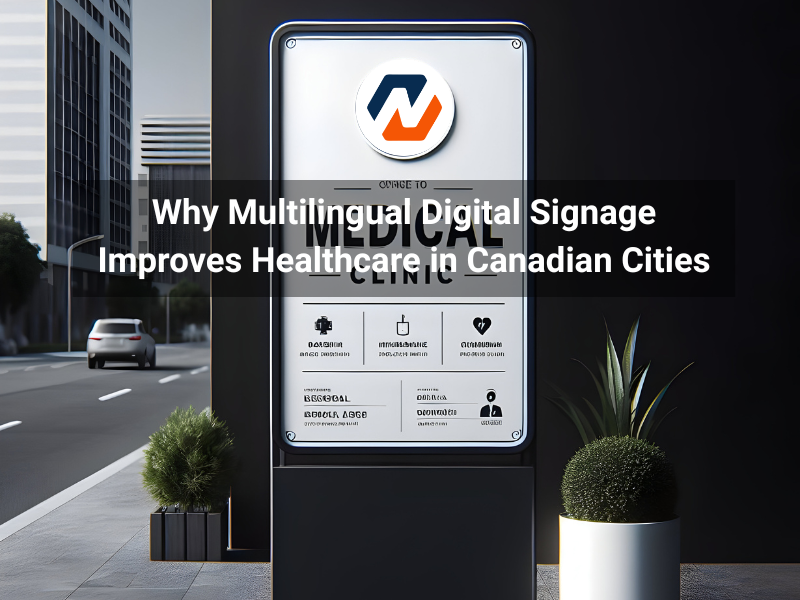admin2025-10-06T19:13:53+00:00
Table of Contents
ToggleIntroduction – Canada’s Diversity in Healthcare
Canada is one of the most multicultural countries in the world. In cities like Toronto, Vancouver, and Montreal, over 40% of residents speak a language other than English or French at home (Statistics Canada, 2024).
For healthcare providers, this diversity can create communication gaps. Multilingual digital signage bridges the gap by delivering critical information in multiple languages.
The Challenge – Language Barriers in Hospitals
- Patients misunderstanding appointment instructions.
- Families unable to read paper notices.
- Staff struggling with translation delays.
The Solution – Inclusive Digital Signage
Hospitals now deploy signage supporting English, French, Mandarin, Punjabi, Arabic, and more. Screens switch languages dynamically or allow touch-enabled selection.
Key Benefits
- Clearer patient communication.
- Reduced misunderstandings and complaints.
- Improved accessibility and inclusivity.
Real Examples – Canadian Hospitals Leading the Way
- Toronto Hospital Network: Displays multilingual wait times & maps in ER.
- Montreal Clinics: Provide French, English, and Arabic displays.
- Vancouver Health Centres: Added Mandarin & Punjabi to digital boards.
Impact on Patient Experience
- 40% reduction in patient confusion (Toronto pilot, 2024).
- 25% higher patient trust scores in surveys.
- Faster patient onboarding with self-service kiosks
Why Multilingual Signage Matters for Healthcare Equity
Equity in healthcare means everyone receives clear, accessible communication. Digital signage ensures newcomers, seniors, and non-English speakers feel safe and included.
Conclusion – Inclusivity Is the Future of Healthcare
Multilingual signage is not just a feature — it’s a requirement for modern Canadian healthcare. As cities grow more diverse, hospitals must embrace solutions that serve every community.

